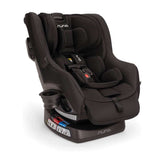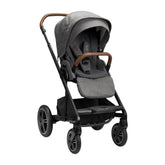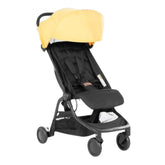Common Car Seat Installation Mistakes and How to Avoid Them
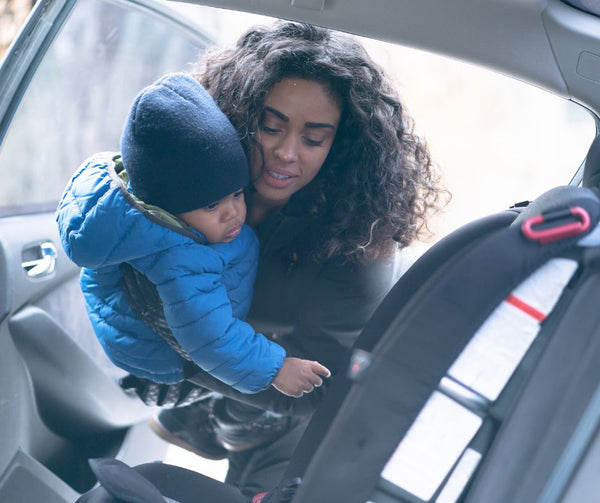
Many parents and caregivers who ride with little ones feel confident that their child's car seat is properly installed. But shockingly, about 50% miss the mark in some way, according to the National Highway Traffic Safety Administration. When the car seat isn’t correctly used or installed, it can come loose during a crash or even simply driving down the road, putting our little ones at risk.
The statistics are startling: over half of all children involved in fatal car accidents are either unrestrained or improperly restrained (FARS: Fatality Analysis Reporting System, NHTSA, 2007). A similar study published in The Journal of Pediatrics shed light on yet another concerning trend – a whopping 95 percent of parents, excitedly taking their newborns home from the hospital, had committed at least one error during the car seat installation process. While these errors may not seem like a big deal with day-to-day travel and running errands, they have the potential to escalate into life-threatening situations in the unfortunate event of a collision.

Common Car Seat Installation Mistakes
As parents, we want to provide our children with the best possible protection. Given how widespread these mistakes are, let’s explore some of the most common car seat installation mistakes that parents unknowingly make and, more importantly, what you can do to avoid them.
1. Loose harness
One of the biggest mistakes observed among parents of newborns is the failure to secure the car seat harness tightly. A loose harness can allow your child to shift outside the protection of the car seat during a crash. Follow your car seat's specific instructions for tightening the harness correctly. One way to make sure it’s snug enough is by using the "pinch test." You’ll know the harness is adequately tightened when there is no excess material that can be pinched between your fingers and thumb at the shoulder. Ensuring a snug harness fit will help optimize your little one’s safety during car journeys.
2. Incorrect harness height
Position the harness to exit the back of the seat either at or below your baby's shoulder height. This strategic adjustment ensures proper restraint and minimizes the risk of injury in the event of an accident. Refer to your car seat manual for specific guidelines on the appropriate height for your baby.
3. Inadequately secured car seat base
Another common mistake involves installing the car seat base too loosely. It’s crucial to ensure that the base is secured tightly, allowing minimal movement, ideally an inch or less in any direction. To guide you through the correct installation process, refer to the following instructional videos from the National Highway Traffic Safety Administration (NHTSA) on using LATCH or seat belts for securing the car seat base effectively.
Installing the Car Seat Base With a Seat Belt
Installing the Car Seat Base With Lower Anchors
4. Misplaced retainer clip
To ensure proper restraint and minimize the risk of serious injuries in the event of an accident, you must place the retainer clip at your child’s armpit level. When positioned too low, there is an increased risk of inadequate restraint, potentially leading to severe injuries to the baby's abdomen and internal organs. By placing the retainer clip at the recommended armpit level, you can improve the overall safety of your child during car journeys.
5. Incorrect recline angle
Yet another frequent mistake involves getting the recline angle of your car seat wrong. Check your car seat manual for the step-by-step on getting the recline just right. Fortunately, many car seats come with handy built-in angle indicators, like level gauges or lines, to make this calibration a breeze.
6. Safety belt used but not locked
Many parents opt to use the LATCH anchors to install the car seat base. They’re often simpler and easier to use than the vehicle seat belt. While installing the base with the vehicle seat belt may be more challenging, it’s perfectly safe when done correctly. If you do choose to install the base using a seat belt, we encourage you to select a car seat that is relatively easy to install using this method. When properly installed, you should not be able to move the base more than one inch in any direction. We also encourage you to visit your local car seat inspection station and have them check out your seat installation in your car before your little one arrives. Visiting a car seat inspection station is a good idea in any case, but especially important if you are installing the base using the seat belt.
7. Improper spacing between the car seat and the front seat
Leave a substantial space between the front seat and the car seat. The car seat can move up to an inch based on the normal tightness of the straps, and in the unfortunate event of an impact, the straps may stretch even further. Keeping plenty of space between the car seat and the front seat not only allows you to easily click and lock the car seat carrier into the base but also ensures the proper functioning of the child restraint system during an accident. To determine the exact spacing required for your seat, consult both your car seat and vehicle owner's manual.
8. Lack of caregiver knowledge
Another important, often overlooked factor is the caregiver's proficiency in adjusting the car seat harness correctly. Anyone designated as a caregiver for your infant must be well-versed in the proper usage of the car seat and the correct method of harnessing your baby into the seat. Ensuring that all caregivers, from grandparents to babysitters, are knowledgeable and proficient in operating the car seat and adjusting the harness is crucial for the consistent and reliable safety of your child during travel. Take the time to provide comprehensive instructions and hands-on demonstrations to anyone who will be responsible for your baby's well-being.
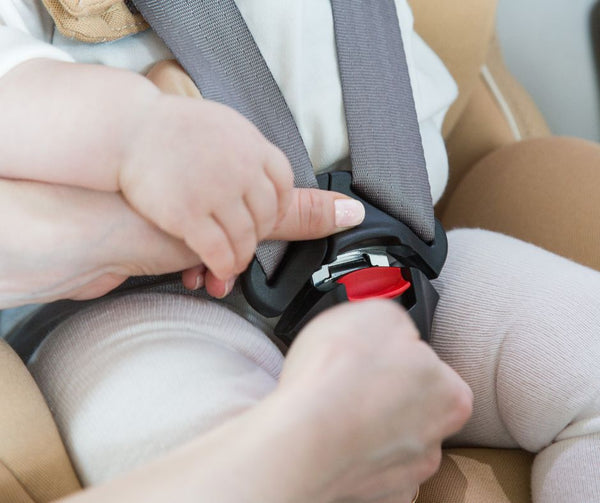
Practical Car Seat Installation Tips for All Families
Ensuring the safety of your child during car journeys is a top priority. Here are some practical tips to guide you through the process:
Choose an Easy-to-Install Car Seat
Considering the frequency of installation mistakes, the choice of your car seat matters. Opt for a car seat that is known for being easy to install and use. ANB Baby offers comprehensive reviews of the best car seats, focusing on ease of installation and ease of use alongside crash test data to ensure a safer option for your child.
Visit a Car Seat Inspection Station
After purchasing your car seat, take advantage of your local car seat inspection station. These stations, often found at places like fire stations or police stations, are staffed by certified Child Passenger Safety Technicians. They can guide you in the proper installation of your car seat or confirm that it has been done correctly, ensuring your baby's safety. This service is free and serves as a valuable national resource.
Read the Manuals
While manuals may not be the most exciting reads, when it comes to car seats, it's crucial to break a sweat and read them thoroughly. Consult both the car seat manual and the section in your vehicle owner's manual covering car seat installation. Never assume knowledge without reading the manuals, as each vehicle and seat has unique limitations and restrictions.

The Bottom Line for Proper Car Seat Installation
Car seat installation and usage mistakes are common and easy to make. Parents inadvertently make errors, particularly when they’re in a hurry, upset, or fatigued (a common sentiment among new parents). That’s why it’s essential to approach car seat safety with heightened attention and diligence. Dedicate extra time for detailed installation, buckling your baby into the car seat correctly, and making the appropriate adjustments every single time. Visit a local checkpoint station with your new car seat and vehicle. Certified experts at these stations can provide invaluable guidance, ensuring the precise location and installation options for the specific seat and vehicle. This not only eliminates guesswork but also gives parents confidence that their car seat installation is correct. To further simplify the process, parents should refrain from moving the base once installed by a technician and consider acquiring a second base for multiple cars, minimizing the chances of errors. By embracing these precautions, parents create a safer and more secure environment for their little ones, reducing the likelihood of mistakes and fostering confidence in every car journey.

